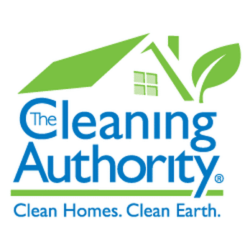How to Clean Painted Walls
Your home’s floors obviously need regular cleaning, but what about your walls? Although painted walls don’t accumulate dirt the same way that floors do, they will start to gather dust, grime, and stains over time, particularly in high-traffic areas. Plan to clean your painted walls about once a year, doing so gently so as not to damage the finish of the paint.
Wall cleaning is just one part of keeping your home tidy, and it’s a big job. If you need help, consider calling a professional service like The Cleaning Authority. This nationwide company knows the best way to clean walls and other surfaces, and you can easily get a free estimate on its website.
However, if you’d prefer to do it yourself, here’s how to clean painted walls.
Prepare to Clean
Before you start soaping up sponges, make sure to get your home ready for this process. For starters, dust the walls you’ll be cleaning to remove any surface-level dirt. You can do this with a dusting cloth, a vacuum cleaner with a dust brush attachment, or a rag around a clean mop head. To get into corners or around baseboards and molding, a foam craft brush is great for detail work.
Also, put down a drop cloth or tarp against the walls you plan to clean. Although you don’t want to use enough water that it actually runs down the walls, there are always drips and spills with any cleaning project, so protect your floors.
Pick Your Cleaning Solution
Which cleaner you use will depend on the type of paint on your walls. Matte, flat, eggshell, or stain finishes are slightly more delicate and need a very mild cleaning solution. Use a small amount of dye-free hand soap or dishwashing detergent dissolved in warm water.
Glossy and semi-glossy finishes are a bit hardier, and you can use cleaners with a degreasing agent, including stronger types of dish soap. You can also use most non-abrasive multipurpose cleaners on this type of paint or make your own by mixing one teaspoon of liquid dish soap and ¼ teaspoon of white vinegar into one quart of water. This cleaner should work on most latex paints.
Finally, oil-based paints can take a slightly stronger cleanser. Use the same mixture from above or substitute a small amount of ammonia for the vinegar. You can consider adding an ounce of borax for every pint of water, as well.
If you have any doubts about how well your wall’s paint will stand up to these cleansers, test a small, inconspicuous area first.
Wash Gently
It’s a good idea to have two buckets and two sponges on hand: one for the cleaning solution and one for plain water to rinse. Use non-abrasive sponges (that is, the smooth side—not the scrubby side) and wring out the sponge so that it’s only mildly damp before touching it to the wall. Too much water can create bubbling or watermarks.
Start at the top of the wall and work downward in small sections, rinsing each area after you’ve cleaned it. Scrub gently, applying very little pressure and working in circular motions. Glossy and semi-glossy finishes are prone to scratching, so be particularly careful on those surfaces. Give extra care to areas around light switches or door frames. Also, be careful not to let any water drip into electrical outlets, wall jacks, or light switches.
Spot Treat for Stains
Walls can accumulate stains over time, so if you encounter any streaks or marks that a mild cleaning solution can’t seem to remove, don’t panic. You can make a paste out of baking soda and water and apply it to the stain. Give it a few minutes to set, and then wipe it away. Be careful not to scrub the mixture too hard, though, because baking soda can be abrasive.
A little bit of hydrogen peroxide can take care of red wine stains, and rubbing alcohol is worth a try. Always try gentler methods before working your way up to harsher cleansers. Cleaning products like stain removal pens and magic erasers can also help out. No matter what cleaner you use, make sure to wipe any residue away with a damp sponge afterward.
Dry the Walls
Since your sponge should be merely damp, there shouldn’t be much water left on the walls after rinsing, but you may want to hand-dry your wall with a towel anyway. If you removed any hanging pictures or other items from the wall, make sure it has thoroughly dried before replacing them. You might want to wait to clean your walls until the weather is warm and dry so you can open your windows to speed the process up.
For help or advice on how to clean walls, The Cleaning Authority offers its services in 45 states across the country, including all but Alaska, Hawaii, Montana, West Virginia, and Wyoming. Get a free estimate from the company today.
For this and similar articles, please visit This Old House


Leave a Reply
Want to join the discussion?Feel free to contribute!